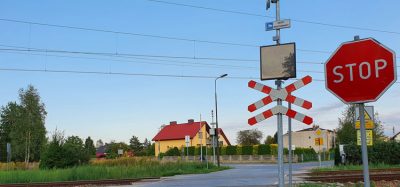Development of ERTMS in Europe and the Rest of the World
Posted: 10 December 2010 | | No comments yet
The first thoughts for the implementation of a unified train control system to facilitate the plan of freight and passenger trains in Europe working in an interoperable and cross border manner arose in the early 1990s as the map for a unified European transport system emerged from the initial stages of the Common Market.
The situation that technically a train could not cross a border because of the differences in the train control systems was opposed to the European ideal. Freight by its nature may be perishable and would be rendered useless if not moved rapidly. Freight goods, whatever their consistency, for good economic reasons need to be moved efficiently to their point of use or consumption. Passengers can also be vocally demanding when faced with delays at border crossings.
The first thoughts for the implementation of a unified train control system to facilitate the plan of freight and passenger trains in Europe working in an interoperable and cross border manner arose in the early 1990s as the map for a unified European transport system emerged from the initial stages of the Common Market. The situation that technically a train could not cross a border because of the differences in the train control systems was opposed to the European ideal. Freight by its nature may be perishable and would be rendered useless if not moved rapidly. Freight goods, whatever their consistency, for good economic reasons need to be moved efficiently to their point of use or consumption. Passengers can also be vocally demanding when faced with delays at border crossings.
The first thoughts for the implementation of a unified train control system to facilitate the plan of freight and passenger trains in Europe working in an interoperable and cross border manner arose in the early 1990s as the map for a unified European transport system emerged from the initial stages of the Common Market.
The situation that technically a train could not cross a border because of the differences in the train control systems was opposed to the European ideal. Freight by its nature may be perishable and would be rendered useless if not moved rapidly. Freight goods, whatever their consistency, for good economic reasons need to be moved efficiently to their point of use or consumption. Passengers can also be vocally demanding when faced with delays at border crossings.
From more than 20 control command systems to ERTMS: a historical perspective
In advancing the vision for railways in Europe, the European Union (EU) was faced with more than 20 different train control and protection systems – some sophisticated, some rather basic, but each was non-interoperable. These systems reflected the choices of the incumbent infrastructure owner/managers or railway undertakings who had selected systems based on their system needs, size and complexity of network and the historical demands for passenger and freight services in their networks. Train signalling systems were commonly procured from a single in-country supplier, depending on the size and industrial sophistication of that country.
Therefore geographically, historically and technically, the idea of designing and implementing an interoperable, integrated, cross border operating rail control system was a huge challenge and a technical and logistical nightmare of giant proportions – but a challenging vision with dramatic potential advantages.
ERTMS as a new technological solution for the railways
The European Rail Traffic management System (ERTMS) gradually emerged. A single solution was seen as the ideal, but there was a recognition for the need to address the existing levels of sophistication of the railway signalling systems ERTMS was targeted to replace. As stated above, each country in Europe had already identified and committed to different solutions; each designed for their own specific requirements – regions and populations – some dealing with very busy freight and heavy passenger demands, some of a more rural less busy network. The planned new ERTMS system had to offer opportunities for increased line capacity, raising network usage in order to provide a real opportunity for Infrastructure Management companies and Railway Undertakings to recover the ERTMS investment cost but to increase their network competitiveness vis-à-vis air passenger traffic on the one hand and cheap road freight on the other hand.
This meant that one single design would not fit all; the interoperable variants of the new, harmonised solution would have to cater for differing situations and offer alternatives to operators who did not need or could not afford at a particular time a new advanced control system solution, simply because their traffic projections did not warrant one. But these same companies would not want to be sidelined or asked to change systems radically once they had committed the first step to enhance their system with ERTMS. A ‘migratable’ but economical solution would have to be found.
ERTMS would essentially take, as a norm by inclusion and adaptation, the latest electronic and communications techniques and technology into its design and functionality to afford a long enough life to recover the initial design costs. Some signalling systems had had a life approaching 40 years!
The techniques for the delivery and presentation of information to the driver, in order to raise speeds of operation and dramatically raise line capacity on existing or new lines, clearly indicated that the traditional delivery by lineside colour signals was no longer acceptable. A radical new proven approach – ensuring total safety – was required. The technology for enhanced train control therefore implied the development of a sophisticated radio technology to deliver the information with dependability. The use of and the combination with GSM technology was decided.
It was considered that line capacity enhancement due to ERTMS would offer an increase in the region of a 10-16% (up to 40% if no pre-existing control command system was installed) but that other factors would need to be considered or implemented to raise the capacity potential significantly further.
Through an extended process of consultation and study, ERTMS has emerged as a signalling standard with all the necessary checks and balances in its development to provide a universal solution. Three levels of application, Levels 1, 2 and 3, have emerged that offer a migration through increasing levels of signalling sophistication that will address virtually all current expectations or demands – though some intermediate ‘infill’ solutions have also been developed.
Where are we today?
Considerable progress has been achieved since the creation of ERTMS. Six major European based manufacturers have been involved from the earliest days in the planning, scoping and detail designing of ERTMS and all six companies now have virtually a full suite of certified products available for delivery. Other companies from within Europe and elsewhere are expected to join this group of manufacturers. Customer choice is very open and direct open competition is occurring – not what was seen in the days before ERTMS.
A set of standards has emerged now allowing true interoperability. Ongoing meetings between the European Railway Agency (ERA) and UNISIG (an industry consortium of the railway signalling companies within UNIFE) are continuing to maintain, develop and update the standards. Control of the standard rests with ERA as the single, responsible standards body providing the stability and harmonisation functions clearly demanded in such high technology of a new, safe system. The currently deliverable standard is termed SRS 2.3.0d. This will migrate to Baseline 3 by 2012 and with compliant product from the suppliers appearing by 2015.
The European Commission has identified a series of primary routes and corridors that are key to the development of the efficient movement of freight and which will act as the focus for supported ERTMS introduction and facilitate and ensure a critical mass for ERTMS being rapidly achieved. Complimentary funding support has been made available for both infrastructure and on-board fitment.
With such advantages now being available, it is on record now that more than 15 European countries, including Switzerland, have committed to and placed or declared more than 160 different contracts for either or both vehicles and infrastructure. These contracts commitments that are either under construction or in commercial service include more than 3,800 vehicles and more than 19,000km of tracks. The first pilot contracts were placed in 1999 and new contracts have been continuing ever since.
The trends indicate that whilst ERTMS is capable of, and designed for mixed traffic environments (ERTMS fitted and non-fitted vehicles) working on suitably equipped infrastructure, the greatest usage has been for custom built High-Speed Lines with operational speeds up to 350km/h. New train fleets ordered with ERTMS already fitted have been dedicated to provide services on these routes. The results of these decisions show some remarkable achievements. In an age of cheap air fares, the Madrid to Barcelona new rail services, supported by the ERTMS and support systems from four of the major manufacturers working together, has for example decimated the cheap airline passenger services by capturing a large and growing percentage of the passenger capacity with its fast, centre-to-centre services and competitive off-peak ticket prices – raising the levels of patronage to the equal of and beyond those achieved by the airlines.
Similar results have been seen in other countries. Switzerland, with more of a mixed traffic scenario, has at least three different supplier fitted trains running at high-speed on its ERTMS fitted lines, making system transitions into and out of ERTMS and the national legacy system without service interruption. In one pioneering case, ERTMS Level 2 is fitted in the 37km Lötschberg Base Tunnel with no light signals and no fallback system – which demonstrates the reliance that a world class rail operating company has put in the inclusion of ERTMS into their national system. There are additional plans forming to deploy ERTMS Level 1 (in a Limited Supervision version) in the non-mainline network and thereby facilitating the removal of the virtually obsolete legacy system.
In Northern Europe, a series of Framework contracts have been placed that set out a call off plan to deliver ERTMS on-board and infrastructure as the network upgrade plans reach fruition. This sets the pattern for ERTMS introduction. Moving to the East, Poland is now committing to ERTMS in part to gain some operational experiences, but in part to respond to and address the EC plans for freight corridors.
There are still hesitations to ERTMS deployment within Europe from some countries that have large and very busy complex passenger networks and large freight commitments supporting hundreds of train movements per day. In this case, existing signalling system investment is a major factor in the decision for the timing of the introduction of ERTMS. Pilot lines have been evaluated and some minor routes have been progressed but the major ERTMS commitment decisions are still awaited. Pressure from the European Commission has been applied to fulfill the freight corridor plans but so far with limited results. Time will tell how the situation will change.
ERTMS as a global standard
The ‘Rest of the World’ has also shown its taste and conviction for ERTMS deployment. Statistics show first contracts being placed or declared from 2002, and up to the time of writing, more than 40 contracts have been placed from 12 countries outside Europe, committing to more than 2,000 vehicles and more than 18,000km of tracks. The conclusion is that these non-European customers are just as committed and very enthusiastic in adopting ERTMS. The committed mileage nearly exceeds the European levels. China, for example, has taken a clear lead in adopting ERTMS for its new high-speed lines and is planning to deploy ERTMS on all future high-speed lines in a huge national build plan.
Other nations with significantly smaller populations have other reasons to deploy ERTMS. Saudi Arabia has committed its newest and longest North–South rail line to be fitted with ERTMS. Although passengers will be carried, the principle aim is to facilitate the transport of natural mineral resources (non-oil) from the mine to the processing plant resources.
Other national operators with smaller but existing networks are committing to ERTMS at either Level 1 or Level 2 to upgrade the performance of their networks in response to growth prediction pressure for new services from their indigenous populations, as well as to move natural mineral resources from the mine to a port. The states of the Maghreb fall into this category. Libya which has had no existing rail network is now strongly moving to build new lines across the country and deep into the interior – using ERTMS as the signalling control system of choice.
We also now see the introduction of ERTMS into the rail systems in New Zealand and Australia.
Conclusions
What can be concluded from these brief examples is that ERTMS is achieving Global acceptance and a market position as the leading train control system and the most advanced available and stable train control solution.
Some areas, such as the United States, which has a dramatically large freight network, cannot justify the introduction of ERTMS for their long lines at this time. However, the case for the planned new high-speed lines in the USA could benefit from the proven capability and availability of ERTMS.
The current Global economic slow down will, of course, have a negative impact to investment decisions and the subsequent speed to invest in ERTMS in some regions.
Pressure in other countries with extremely poor accident records will increase, not only from the railway industry but also from the local population demanding greater safety, supporting the potential introduction of ERTMS on a greater scale than has currently been seen.
There are some concerns regarding the life time cost benefits of fitting ERTMS. To a large extent, competitive pressures are clearly producing a lowering of unit prices. The visibility of a continuous and consistent work bank for both infrastructure and on-board fitment will prove dramatically helpful for the supply industry. Special consideration will need to be given to the on-board retrofit work bank where every class of vehicle will require first fit engineering work to be undertaken, in order to keep the prices as low as possible. Continuity and repeatability of work is a vital factor in this situation, and the railways are clearly in control of this element.
The price of ERTMS has been an area of comment but it is also clear that new companies are entering the supply chain, adding spice to the competitive arena and so providing a confidence boost to potential customers of the supply side interest and commitment.
A dramatic potential improvement to the reduction of total life cycle price calculations lies in the opportunity for efficiency improvements in the testing and certification process. Wider acceptance of cross acceptance testing and a re-alignment of test procedures to avoid costs for repeated testing of elements already tested will show dramatic results.
ERTMS is now a globally accepted train control solution and clearly becoming the system of first choice. There are operational variants within the standard system choices that allow users the migration of networks. Total committed or operational mileages now exceed 37,000 track-km and the number of committed or fitted vehicles now exceeds 5,500. There should be every confidence that ERTMS has arrived, is here now and is here to stay.
About the Author
Patrick Clipperton
Patrick qualified as a mechanical engineer in 1977 and joined the rail sector in 2001 with Bombardier for ERTMS promotion, joining Thales UK in 2008 focusing on main line signalling. Patrick is the current Chairman of the UNIFE ERTMS Marketing Group which recently designed and released the UNIFE ERTMS logo.
Stay Connected with Global Railway Review — Subscribe for Free!
Get exclusive access to the latest rail industry insights from Global Railway Review — all tailored to your interests.
✅ Expert-Led Webinars – Gain insights from global industry leaders
✅ Weekly News & Reports – Rail project updates, thought leadership, and exclusive interviews
✅ Partner Innovations – Discover cutting-edge rail technologies
✅ Print/Digital Magazine – Enjoy two in-depth issues per year, packed with expert content
Choose the updates that matter most to you. Sign up now to stay informed, inspired, and connected — all for free!
Thank you for being part of our community. Let’s keep shaping the future of rail together!







